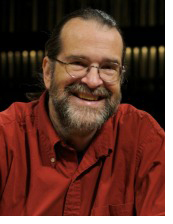Dance and Light, a new book by Kevin Dreyer, a lighting designer for dance, theatre, opera, and film, as well as associate professor of theatre at the University of Notre Dame and resident lighting designer for the Notre Dame Shakespeare Festival, examines the interconnected relationship between movement and design, the fluid partnership that exists between the two disciplines, and the approaches that designers can take to enhance dance performances through lighting design.
In his book, Dreyer demystifies lighting for the dancer and helps designers understand how the dancer/choreographer thinks about their art form, providing insight into the choreographer’s process, and exploring how designers can make the most of their resources. He shares anecdotes and ideas from an almost 50-year career as a lighting designer, along with practical examples and insights from colleagues, and stresses the importance of clear communication between designers, choreographers, and dancers. Attention is also given to the choreographer who wants to learn what light can do to help enhance their work on stage.
Read an excerpt from Dance and Light below.

“Why Do We Need A Book About Dance Lighting”
Most dance lighting designers approach light in very similar ways. We have come to accept certain conventions as foundational and we do talk with one another about theories or techniques for lighting dance. These relate to where lights should go, what sorts of colors should or should not be used, how best to focus the instruments, and how to figure out where a cue, or change in the lighting, belongs in a particular dance. These technical choices are what this book is about; but that is not all that I am trying to do. It is my hope that you will not only learn how to do these things but that you will also understand why we do them the way we do. Without an understanding of the “why” I do not think you can claim to understand “technique”–whether it is for dance lighting or classical music or painting.
 I do not think that what is in this book is new; but I do believe that I may have a different way of thinking about it. I started designing lights in 1971; the earliest dance techniques trace back to the 15th or 16th centuries. Electric lights were developed in the late 1800s and stage lighting shifted to electricity as the century turned into the 1900s. My point in all of this is that it did not start with me and I have not really brought anything new to the process of lighting dance. The woman most people credit as establishing the first specific approach to lighting dance, Jean Rosenthal, wrote eloquently about the unique relationship between dancers and light.
I do not think that what is in this book is new; but I do believe that I may have a different way of thinking about it. I started designing lights in 1971; the earliest dance techniques trace back to the 15th or 16th centuries. Electric lights were developed in the late 1800s and stage lighting shifted to electricity as the century turned into the 1900s. My point in all of this is that it did not start with me and I have not really brought anything new to the process of lighting dance. The woman most people credit as establishing the first specific approach to lighting dance, Jean Rosenthal, wrote eloquently about the unique relationship between dancers and light.
In her book, The Magic of Light (p. 117), she opens her chapter on dance with the following quote: “Dancers live in light as fish live in water. The stage space in which they move is their aquarium, their portion of the sea. Within translucent walls and above the stage floor, the lighting supports their flashing buoyance or their arrested sculptural bodies. The dance is fluid and never static, just as natural light is fluid and never static.”
From the first time I read this quote I was struck by its poetry. The wisdom it contains was something I came to understand a bit more slowly. Dancers have a very different relationship with the theatrical space than virtually any other performer and as a result with the lighting that seeks to define it. The idea of an aquarium created by light is poetic, but it describes a practical process of defining, for the audience, the space in which the dance is to occur. It also speaks to the philosophical concept of support. We are called upon to support dancers in motion and in stasis, and as any dancer will tell you support is the key component in partner work. So we are, in effect, asked to create lighting that will partner the dancer.
Finally Ms Rosenthal speaks to the most challenging aspect of lighting dance—motion. When we were getting ready for the panel presentation (Why Is Dance Lighting So Hard To Get Right?) one of the participants emailed us all a note that said “And did we mention that dancers move?” Actors certainly move about the stage space, so this concept of lighting things that will not be pinned down to a single spot is not alien to lighting designers. But dancers move as a way of communicating images and ideas. Generally speaking, they also move more frequently and cover greater distances than actors. Movement is their language and it is up to us to reveal it in appropriate ways without distorting the meaning of what is being said through the choreography and the performance. Ultimately it is a different and unique aesthetic partnership, more so than virtually any other that exists in live performance.